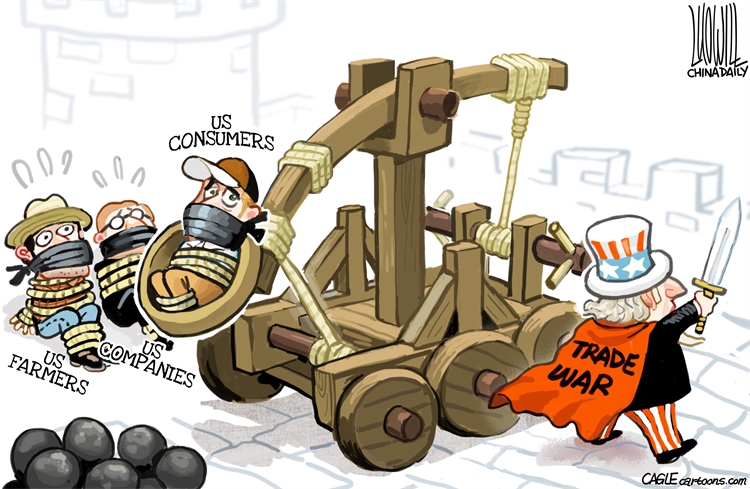
The selected image describes the difference between free trade and the politics of protectionism. It was first created and published by Currier & Ives. in 1888 in New York (“Free Trade and Protection”). The creator’s viewpoint on free trade is negative, and its represented in the picture. In the first part, the husband comes home with no food, money and poorly dressed as there are no opportunities to earn due to the dominance of free trade. However, the second part represents a man sharing money and food with the family as a protective tariff provide him with employment opportunities and changes to support all his close people.
In such a way, the given image with created with the primary goal to show the negative impact of free trade on local workers and manufacturers. Because of the absence of governmental regulations and protection, people might suffer from the influx of other actors and lose all chances to sell their products or work. For this reason, households might suffer and experience the lack of products needed to support their living. However, the image demonstrates the outdated and irrelevant view on free trade and tries to ensure that protectionism is the only option to ensure stability. It can be viewed as a false assumption as it also might destroy rivalry and equal access to markets.

The second selected media is a cartoon depicting the main victims of trade wars. It is created by the artist Luojie to outline the current reality and show the real effects of barriers that are created by the government. The creator’s view point is evident as he wants to show that trade wars mainly hurt common people, farmers, and companies, who are used as shells for the war machine. They will all suffer from sanctions and additional penalties as the cohort most dependent on them.
The given idea is very close to reality as, in most cases, limits introduced by the government strike its people who are not interested in them. All trade wars affect not only the parties that should be punished, but they might also hurt companies and consumers requiring certain goods that are now prohibited from being exported. Under these conditions, trade wars become a two-edged sword hitting all agents and depriving states of a chance to help their citizens.
Free Trade and Protectionism
Altogether, free trade has both benefits and disadvantages that should be mentioned. First of all, it promotes economic growth due to the emergence of new products and materials that can be used by various actors (Irwin 56). Second, it creates more opportunities for direct foreign investment as the elimination of barriers for cooperation stimulate other nations to participate in other countries’ incentives (Irwin 65). However, there are also some disadvantages, such as the reduction in the number of jobs available for people and the dominance of large providers, which can establish prices and affect consumers directly (Irwin 111).
For this reason, there is a need for consideration of all aspects of free trade. Protectionism is a phenomenon different from free trade as it presupposes policies restricting international incentives to support domestic industries and firms (Irwin 121). The country can prefer using it to avoid competition with powerful global corporations and create beneficial conditions for national companies generating additional resources. For this reason, protectionism can remain a potent measure to help governments to achieve current goals.
Works Cited
“Free Trade and Protection.” Library of Congress. Web.
Irwin, Douglas. Free Trade under Fire. 5th ed., Princeton University Press, 2020.
Luojie. “Trade War Victims.” Cagle. Web.